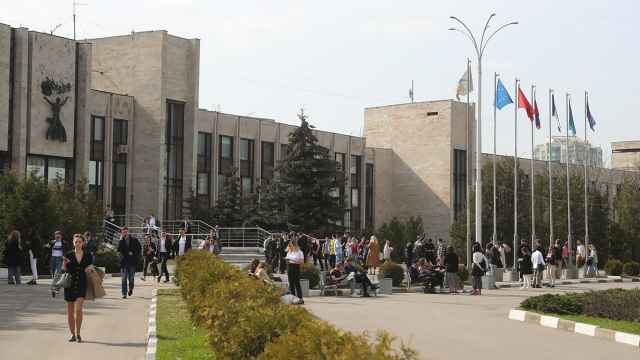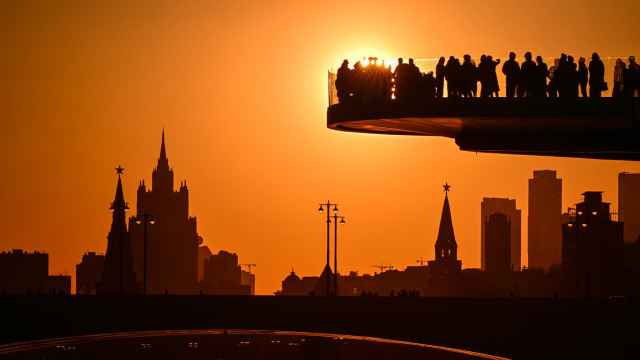Whenever talk turns to the Cold War, it calls up memories of the superpower standoff, the arms race, regional conflicts, the constant threat of enemy missile launches and, of course, the way the Soviet Union lost the Cold War when its economy and technological prowess collapsed in 1991. But at the same time that the Soviet Union was engaged in a Cold War with the West, it was fighting an even more extensive "war with the cold" on home turf.
Starting from World War II, the Soviet Union's production forces underwent a major shift toward the north and east of the country, and the emergence of a raw materials-based economy only strengthened that trend. As a result, a greater portion of the population relocated to less hospitable climates, and the cost of providing housing and other services for that workforce shot up in price. By the final years of the Soviet Union, only 22 percent of all investment was spent on procuring new equipment, whereas 78 percent went to the construction of buildings and laying communications. Russia inherited this difficult situation and is now the only country to have cities with a population of more than 1 million where the average annual temperature is only 2 degrees Celsius or lower. Of the 100 coldest cities in Russia and North America, 85 are in Russia, 10 are in Canada, and only five are in the U.S.
If Russia initiates a full-scale drive to develop its far north, it will likely break the economy.
Most northern countries long ago found the solution to coping with "problematic locations." Their economic centers are located in the south and usually in coastal areas. That is why the average annual temperature in Anchorage, on the 62nd parallel, is 2.8 degree Celsius, and in Tomsk, on the 56th parallel, is minus 0.9 degrees Celsius. At the same time, those countries employ fewer people to mine comparable quantities of mineral resources, thereby lowering the costs associated with housing large northern populations.
Transportation routes are linked to ports and only minimal development is made to roads and railroads in remote areas. Countries that follow this strategy have smaller outlays for battling cold temperatures. As paradoxical as it might seem, the average January temperature experienced by the average Canadian rose by 1.2 degrees Celsius between 1930 and 2010: from minus 10.1 degrees to minus 8.9 degrees Celsius. During the same period in Russia, that figure dropped by 1 degree Celsius: from minus 11.6 degrees to minus 12.6 degrees Celsius.
Russia is critically dependent on Siberia and the Far East. The region produces more than 77 percent of the country's oil, about 85 percent of its gas, much of its coal and iron ore and almost 100 percent of its nickel, platinum and diamonds. In addition, export duties on oil and gas along with taxes on the extraction of natural resources provided 50.7 percent of all revenues for the federal budget last year.
The current leadership wants Russia to regain the greatness of the Soviet period but has no better approach than implementing a policy that mimics the Gosplan of the 1960s. The recently adopted programs for developing Siberia and the Far East speak openly of the need to increase the populations in those regions, even though the average population density in the Siberian Federal District is already 7.7 times higher than that of Alaska. If the population of Alaska were that dense, it would be the 19th most-populous U.S. state, rather than the 48th as it is now. These programs call for reestablishing a permanent settlement on the banks of the Arctic Ocean, the building of a Northern Siberia railroad from Berkakit to Yakutsk, then through the city of Moma to Magadan and on to Chukotka. The authorities also want to build a bridge from the mainland to Sakhalin Island and to develop dozens of mineral deposits and oil fields in the far north.
The Russian government is determined to carry out its own push to the far north by starting a full-scale "war with the cold." But this policy is economically futile. The construction of the northern railroads would cost at least $60 billion to $70 billion, not including the planned tunnel beneath the Bering Strait. At the same time, Russia's annual trade with Alaska totals only $11 million. What's more, Russia intends to build roads and railroads over permafrost rather than put the same money into developing air travel, a move that would shrink the enormous expanses separating people in this country. In contrast, Alaska has 550 airports, 3,000 landing strips for light aircraft and about 12,600 registered airplanes. Instead of concentrating industrial and human potential along Siberia's southern borders, Russia intends to once again develop the Arctic. Instead of integrating into the economy of the Pacific Rim, Russia plans to pursue the illusory idea of shipping U.S. goods through Chukotka to Europe.
At this point we have only heard vague calls to develop Siberia and the Far East, and it is difficult to say just how large-scale the actual effort will prove. At present, Russia's Trans-Siberian railroad carries only 1 percent of Asia's trade with Europe, and the quantity of goods shipped through the Northern Sea Route remains three times lower than during the Soviet period. Experience with the Shtokman natural gas field shows that Russia lacks the necessary technology for offshore energy production. If Russia does initiate a full-scale drive to develop and settle its far north, it will probably break the Russian economy just as the Soviet economy collapsed in 1991. Considering Russia's potential relative to that of the Soviet Union, its proposed "war with the cold" is probably more than it can handle.
Vladislav Inozemtsev is a professor of economics, director of the Moscow-based Center for Post-Industrial Studies and editor-in-chief of Svobodnaya Mysl.
A Message from The Moscow Times:
Dear readers,
We are facing unprecedented challenges. Russia's Prosecutor General's Office has designated The Moscow Times as an "undesirable" organization, criminalizing our work and putting our staff at risk of prosecution. This follows our earlier unjust labeling as a "foreign agent."
These actions are direct attempts to silence independent journalism in Russia. The authorities claim our work "discredits the decisions of the Russian leadership." We see things differently: we strive to provide accurate, unbiased reporting on Russia.
We, the journalists of The Moscow Times, refuse to be silenced. But to continue our work, we need your help.
Your support, no matter how small, makes a world of difference. If you can, please support us monthly starting from just $2. It's quick to set up, and every contribution makes a significant impact.
By supporting The Moscow Times, you're defending open, independent journalism in the face of repression. Thank you for standing with us.
Remind me later.








